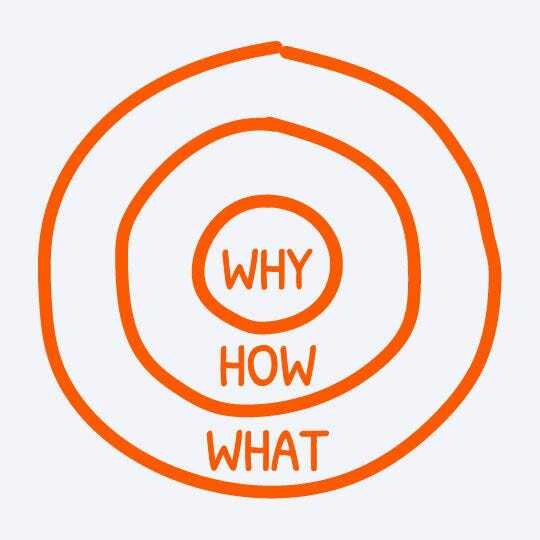
We got talking in the office recently about talks or communications we had seen or read that we found particularly inspiring. My mind immediately went to my all-time favourite TED Talk where Simon Sinek explains “How great leaders inspire action”. If you’ve not seen it before, you can watch it here: https://www.ted.com/talks/simon_sinek_how_great_leaders_inspire_action?language=en
The premise is that successful people and organisations act in the same way — they start with ‘Why’. All organisations know what they do, and most know how they do it (their differential, their USP), but few can articulate why — their purpose, their cause, their belief. He calls this the golden circle:

The easy way to sell your wares is to say what you sell, how you do it and then say buy it. From the clear what to the fuzzy why. But successful people and organisations flip that. They start with the why, they explain their purpose and the reason they exist and behave as they do, before they tell you how they do it and what they do.
One of his examples is Apple. They don’t market by saying “We make great computers (what), they’re beautifully designed, simple to use, and user friendly (how), wanna buy one? Instead they say “Everything we do we believe in challenging the status quo, we believe in thinking differently (why), we do this by making our products beautifully designed, simple to use, and user-friendly (how), we just happen to make great computers (what) — wanna buy one? To summarise, “People don’t buy what you do, they buy why you do it”.
While Sinek’s talk focuses on how this theory can help leaders inspire action and grow their business, it got me thinking about how we approach new projects at Behaviour Change. I realised Sinek’s golden circle translates perfectly into how we approach projects, with understanding the why of the behaviours we are being asked to help change being at the core of everything we do.
Our clients come to us with a “What” (e.g we want our residents to recycle more, we want our customers to conserve water, we want people to not litter gum), and they often come to us with an idea of what they think the “How” should be as well (we want a poster, an advertising campaign, an email). But very few really know the true “Why” of the behaviour they are trying to change in the first place — why aren’t your residents recycling, why aren’t they conserving water, why do they drop their gum?
Starting with “Why” is always our first port of call. We can’t give advice as to how to change someone’s behaviour if we don’t understand why they behave like that in the first place and that means looking beyond the assumptions which can be false and/or misleading.
It's why every single one of our projects starts with an insights phase. Existing evidence reviews, identifying any gaps, and using innovative research methods to really understand people’s everyday lives and why they behave the way they do. Only once we really understand the why can we begin to consider how we might be able to change that behaviour, and in turn what that intervention might be.
If you’ve got a probem which is about real-world change for social or environmental good — we’d love to hear about it and see if we can help really get under the skin of the problem by starting with Why.
As with all our blogs, the information contained in this post represents the views of the author and does not necessarily represent the views of Behaviour Change Ltd.
Share
RELATED ARTICLES
Life at Behaviour Change

Wellbeing at Behaviour Change
Our Wellbeing Lead, Polly, shares 5 things we do for wellbeing at Behaviour Change
15/05/24
Read moreLife at Behaviour Change

Our 2023 Round-up
Honica reflects back on 2023 and highlights Behaviour Change's achievements throughout the year
18/12/23
Read moreBehavioural science

Could this be a sign?
David reflects on what it takes to create a sign with the power to change behaviour for the better
05/12/23
Read more